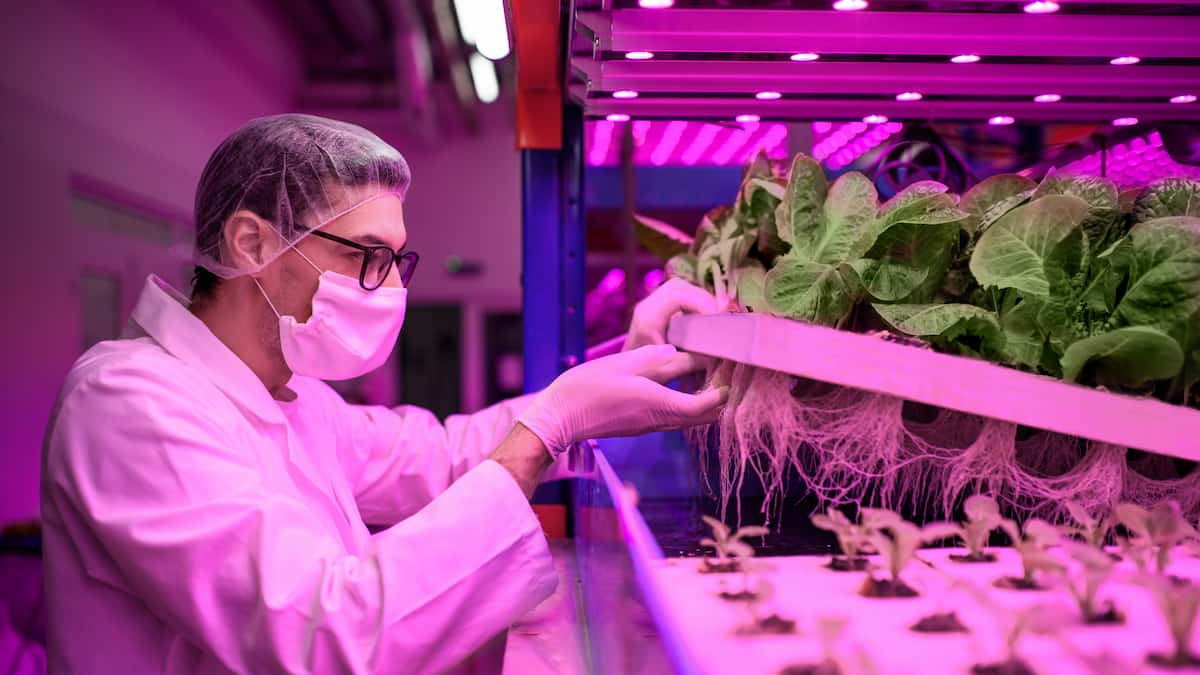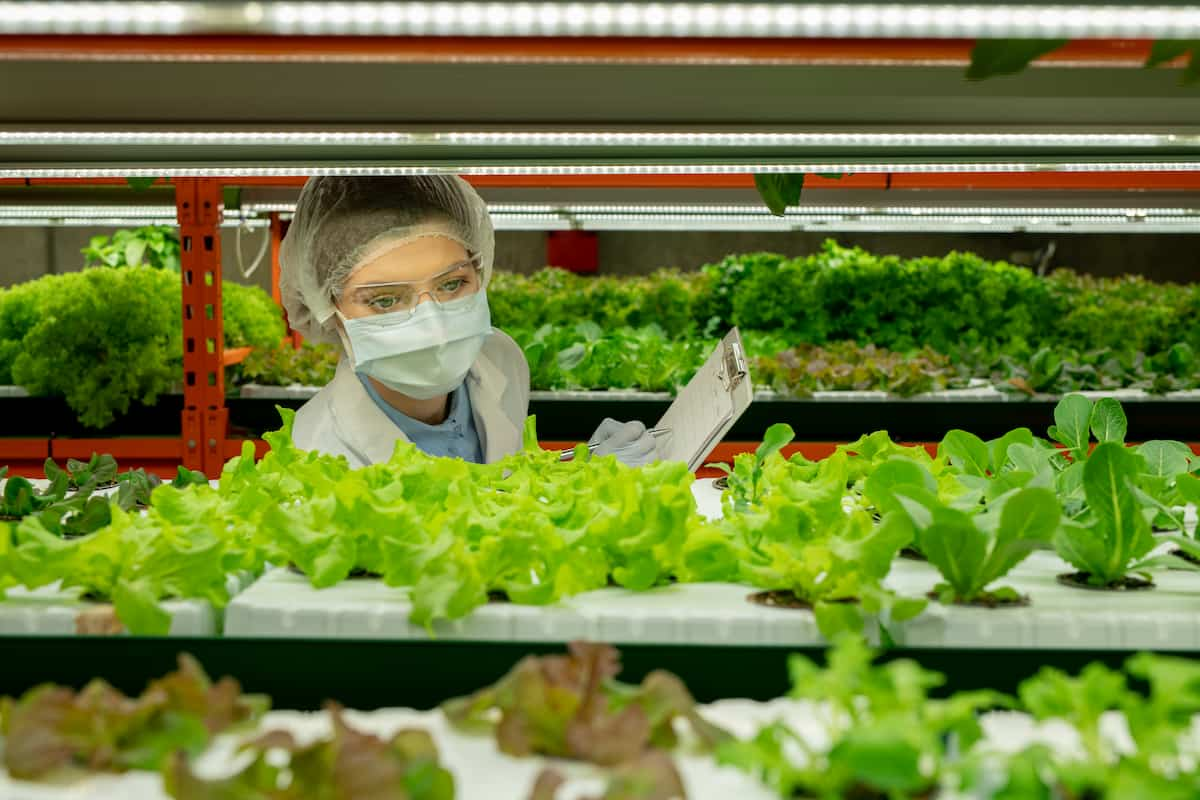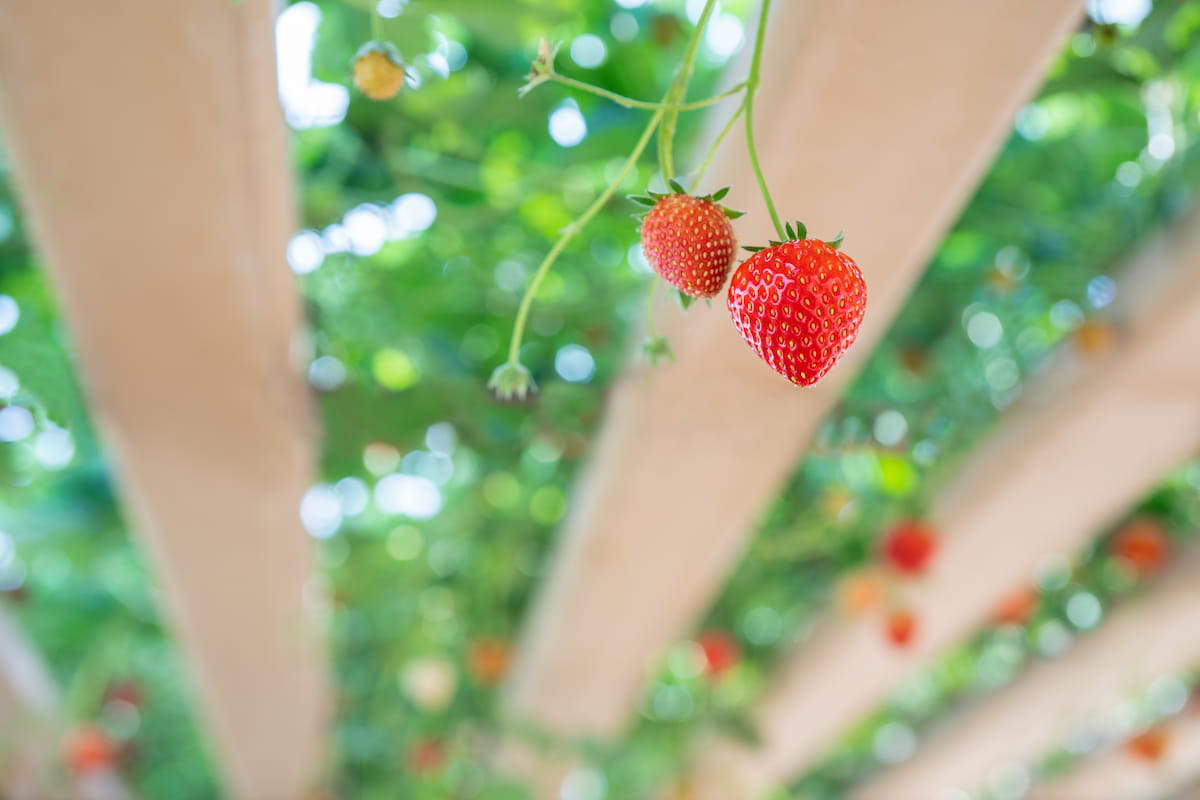A vertical hydroponic system is a modern agricultural method combined with vertical farming. In vertical hydroponic farming, food is grown vertically to save space. The primary purpose of this farming method is to produce as many crops as possible in the smallest amount of space possible. Hydroponic farming has gained much attention in recent years due to its benefits. These hydroponic farms use advanced technology to maximize plant growth, providing fresh, local produce using less water, space, and pesticides.

In Hydroponics, plants are grown in a controlled environment without soil using different substrates (coco peat, hydroton, perlite, clay balls). Water conservation is a huge benefit of this technology, requiring 90% less water than flat farming. A vertical farming system makes hydroponic farming easier in India due to its space-saving features. You can maximize crop production using Hydroponics by using fewer agricultural inputs.
How to Start Vertical Hydroponic Farming at Home
Basic Requirements for Hydroponics
You need six things: light, air, water, nutrients, heat, and space. Growing hydroponically can be done indoors or outdoors. For plants to thrive in either setting, they need five to six hours of light daily, electricity access, and a level, wind-free area.
- Water: Minerals such as calcium and magnesium are commonly found in hard water. Even so, an overabundance is not good for your plants since they don’t need them as much as macronutrients. Generally, water should be kept in the range of 200 to 300 parts per million.
- Light: It is generally recommended that plants be exposed to direct sunlight for at least six hours daily when growing outdoors. To grow edible plants indoors, supplemental grow lighting is recommended.
- Temperature: In the fall, temperatures should range from 10°C to 21°C; in the spring, temperatures should range from 15.5°C to 26.5°C.
- Humidity: Vegetable crops require a humidity range of 40 to 70% RH (relative humidity), with 50% ideal. Plants can’t breathe or transpire if it’s too humid. Powdery mildew and nasty fungus can also thrive in very humid air. Pollination is difficult when humidity is too high or too low.
- Oxygen: To maximize nutrient absorption, supplemental oxygen must be provided.
- Structure & Support: As plants grow, stakes and strings are usually needed to support them.
Types of the Growing Medium in Hydroponics
- Rockwool: A porous material made of spun basalt rock fibers, rock wool is also known as stone wool. Growing mediums like this are extremely popular due to their high water-holding capacity. Its ability to absorb easily and drain well makes it a great choice for ebb and flow systems.
- Lightweight Expanded Clay Aggregate: Clay pebbles are round pieces of heat-expanded clay known as lightweight expanded clay aggregate. It can be reused. For some systems, clay pebbles may drain too quickly due to their weight and the speed at which they drain.
- Coconut Fiber: Coconut fiber, or coconut coir, is a biodegradable, organic growing medium made from the inner pith of coconut husks. The upside of coconut coir is that it gives purpose to an otherwise discarded coconut product. Additionally, it traps oxygen fairly well and feels similar to potting soil.
- Perlite: There are two ways to use perlite: combining with other growing mediums or using it independently. Perlite is easy to control due to its lightweight. Additionally, it absorbs water fairly well but not so well that overwatering is problematic. Consequently, this growing medium is best suited to wick systems.
In case you missed it: How to Start a Hydroponic Retail Store: A Profitable Agriculture Business Idea

Required Water pH for Vertical Hydroponic Farming
Generally, hydroponically grown crops need a pH range between 5.5 and 6. The range of temperatures is ideal for many fruits and vegetables, including melons, apples, beans, squash, and tomatoes. In contrast, blueberries require a lower, more acidic pH range between 4.0 and 5.0. Using separate nutrient reservoirs for plants with similar pH ranges is a good idea. There is a wide pH range for some hydroponic crops. For example, pumpkins thrive in a pH range of 5.5 to 7.5. Onions, peas, and kale prefer alkaline conditions between 6.0 and 7.
How to adjust pH for Vertical Hydroponic Farming
The pH of the water can be lowered by adding an alkaline baking powder if it is too high. If the pH level is low, add something that contains acid, such as citruses, white vinegar, or lemon juice.
Growing Plants in Vertical Hydroponic Farms
- Warm-Season Crops and Herbs: Tomatoes, peppers, eggplants, cukes, beans, squash, melons, herbs, etc., need daytime temps of 21°C to 26.5°C degrees and nighttime temps of 15-21.5°C. The absolute max temperature is 90 degrees.
- Cool-Season Crops: Broccoli, cabbage, lettuce, endive, peas, spinach, green onions, etc., will need 15-21.5°C during the day and 10-15°C at night. The absolute minimum temp is 4.5°C.
Nutrients and Fertilizers for Hydroponics
The choice of fertilizers must be made regardless of your approach to nutrient solutions. In addition to solubility, cost, and market availability, several other factors must be considered. Plants can have difficulty absorbing nutrients like iron, manganese, and zinc. Chelates are organic molecules surrounding metals, making them readily available for plant uptake even when pH changes. Below are some fertilizers commonly used in Hydroponics.
| Fertilizer | Nutrients contained | Solubility in Coldwater (g/100 ml) | Solubility in Hot water (g/100 ml) |
| Manganese sulfate | 31% manganese | 52 | 70 |
| Ammonium nitrate | 34 – 0 – 0 | 118.3 | 871 |
| Potassium nitrate | 13 – 0 – 44 | 13.3 | 47 |
| Magnesium sulfate | 9.1% magnesium | 71 | 91 |
| Zinc sulfate | 35.5% zinc | 96.5 | 663.6 |
| Copper sulfate | 25% copper | 31.6 | 203.3 |
| Potassium phosphate monobasic | 0 – 52 – 34 | 33 | 83.5 |
| Calcium nitrate | 15.5 – 0 – 0 and 19% calcium | 121.2 | 376 |
Advantages of Vertical Hydroponic Farming
- Farmers can maximize yields by optimizing the timing, quality, and quantity of inputs to their plants.
- A hydroponic farm uses 90 percent less water than a traditional farm.
- A constant stream of nutrients and light inputs helps reduce the crop cycle significantly.
- Vertical farms allow farmers to maximize their space use and optimize their ground space. Farmers can grow 3 to 10 times more crops in the same amount of space by growing crops vertically instead of horizontally.
- With soil-less growing, growth space can be utilized continuously. Therefore, there is no waiting period after harvesting a crop cycle before planting the following season’s crops.
In case you missed it: How to Grow Hydroponic Tomatoes: Indoors, Yield, Problems, and Solutions

Conclusion
The benefits and advantages of vertical hydroponic systems include stability and a completely controlled environment that boosts plant growth. Keeping the internal temperature at ambient levels and protecting the farm from weather conditions, this system offers complete weather protection. Vertical hydroponic systems can be rapidly built, are easy to scale, and are very modular.
- Feed Your Flock for Less: Top 10 Tips to Save on Chicken Feed
- Ultimate Guide to Ossabaw Island Hog: Breeding, Raising, Diet, and Care
- Hatching Answers: The Top 10 Reasons Your Chickens Aren’t Laying Eggs
- Eggs and Economics: Breaking Down the Cost of Raising Backyard Chickens
- Defend Your Greens: Proven Methods to Keep Iguanas Out of Your Garden
- Ultimate Guide to Cinnamon Queen Chicken: A Comprehensive Guide for Beginners
- Ultimate Guide to California Tan Chicken: Breeding, Raising, Diet, Egg-Production and Care
- Ultimate Guide to Marsh Daisy Chicken: Breeding, Raising, Diet, and Care
- 10 Types of Chicken Farming Businesses You Can Start for Profits